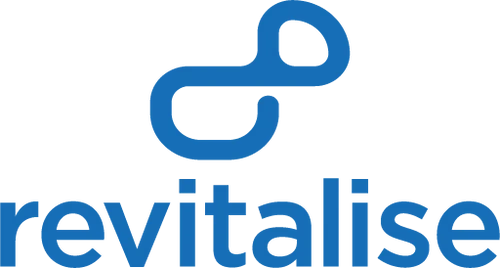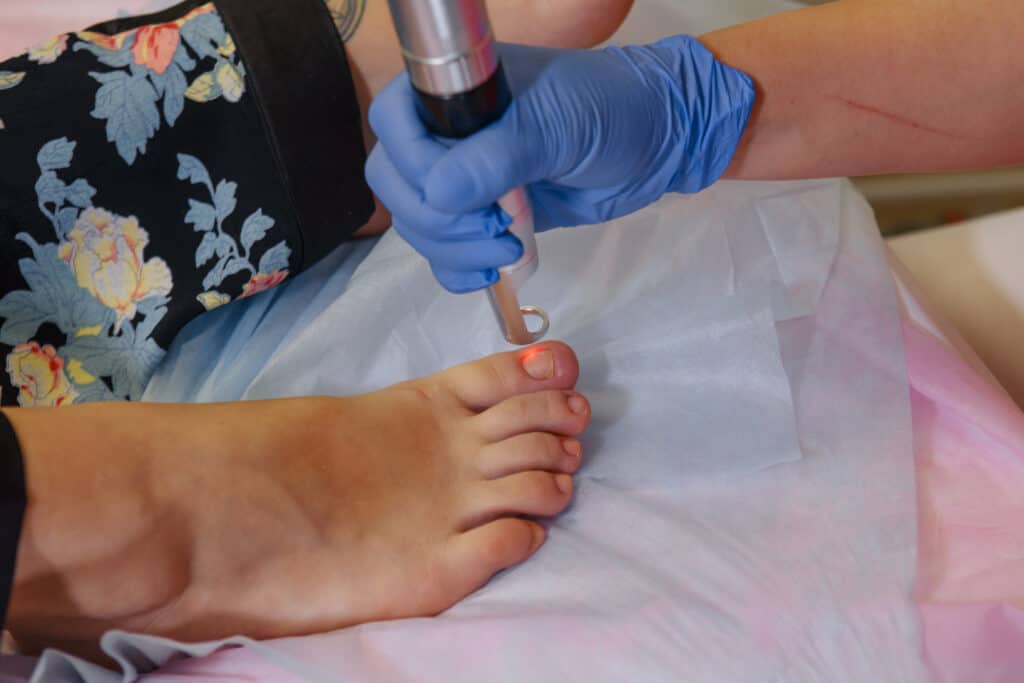Introduction
When treating toenail fungus, there are many treatments available: from topical creams to oral medications. But laser therapy has become one of the most effective and popular choices for many Revitalise London Dermatology Clinic patients due to its numerous advantages over other methods. In this blog post, we will look into why laser therapy has become such a popular choice in treating Fungal Nails and why many Revitalise London Dermatology Clinic patients now opt for this method over others.
Understanding Nail Fungus and Its Risk Factors
Understand what causes Nail Fungus and what you can do about it.
What Is Nail Fungus?
Nail fungus, also known as onychomycosis, is a common condition affecting the nails. When fungi infect the nail bed, symptoms include thickening, discolouration and brittleness of the nails – in some cases even pain and discomfort. Since this condition can be chronic and difficult to cure, finding an effective solution for treatment is paramount.
Nail Fungus Risk Factors
Risk factors for Nail Fungus include frequent exposure to damp environments, reduced blood circulation, a weakened immune system and wearing tight non-breathable footwear. By understanding these risks factors individuals can help prevent the growth of Nail Fungus and maintain healthy nails.Comparing Conventional Treatments with Laser Therapy for Nail Fungus
Laser therapy offers numerous advantages when compared to conventional Nail Fungus treatments, including its speedy recovery time, reduced risks, and versatility in application.
Conventional Nail Fungus Treatments
Before discussing the advantages of laser therapy for Nail Fungus, let us first review some traditional treatments available for this condition:
- Nail Fungal Creams: Over-the-counter creams and ointments may provide temporary relief from symptoms, but often have limited success in treating the underlying infection.
- Anti-fungal medications: Oral anti-fungal drugs can be more effective than topical treatments, though they may have systemic side effects and not be suitable for everyone.
- Nail Fungus Home Remedies: Many people try home remedies such as tea tree oil or vinegar soaks to relieve symptoms, but these methods have limited effectiveness and are time-consuming.
While these treatments may provide temporary relief, they often fail to address the underlying cause of infection which leaves recurring symptoms unresolved.
How Does Laser Therapy Effectively Treat Toenail Fungus at Revitalise London Dermatology Clinic?
Laser therapy has emerged as a highly effective treatment option for toenail fungus, offering patients a non-invasive, quick and painless alternative to conventional methods. By targeting the fungi directly with laser energy, Revitalise London Dermatology Clinic professionals can achieve remarkable results with minimal side effects.
Laser therapy is a non-invasive procedure in which an experienced specialist directs laser light at the infected nail. The laser penetrates both the nail and its underlying bed, eliminating any fungi responsible for infection. Generally performed without anesthetic, this procedure has proven safe and effective.
What Are the Advantages of Laser Therapy?
Outlining the Key Benefits of Laser Therapy for Toenail Fungus
- High Nail Fungus Success Rate: Laser therapy has shown to have a high success rate in treating nail fungus. Many patients report significant improvements to their nails’ appearance and health after just one or two sessions of laser therapy.
- No Side Effects: Unlike oral medications, laser therapy does not involve the ingestion of drugs, minimising the potential risk for systemic reactions and making it a safer option for those with preexisting medical conditions.
- Rapid Treatment and Recovery: Each laser therapy session lasts only 30 minutes, making it a time-efficient solution. Furthermore, there is no downtime associated with the procedure, allowing patients to resume their regular activities immediately followingward.
- Low Risk of Recurrence: Laser therapy effectively eradicates the fungus, so there is a significantly reduced risk of recurrence compared to other treatment methods.
- Aesthetic Improvement: Laser therapy not only treats the underlying fungal infection, but it also enhances the appearance of affected nails, giving patients renewed self-assurance.
- Minimal Discomfort: Most patients report little to no discomfort during the procedure, making it a painless and stress-free option for treatment.
- Diabetic Patients Benefit From Laser Nail Fungus Therapy: Diabetics often have difficulties with traditional nail fungus treatments due to reduced circulation and weakened immunity. Laser therapy offers them a safer, more effective option that may be more suitable for their needs.
FAQs and Preparing for Your Appointment
Common Questions about Laser nail Fungus Treatment
In this section, we will address some common questions and concerns patients may have about laser therapy for nail fungus.
Q1: Is laser therapy for nail fungus painful?
A1: Most patients report little or no discomfort during the procedure. Some may experience a mild warming sensation, but overall it’s an unintense treatment.
Q2: How Many Sessions Will Be Necessary?
A2: The number of treatments required varies based on the severity of the infection; however, many patients see significant improvement after just one or two treatments. Your Revitalise London Dermatology professional will assess your condition and suggest the necessary number of sessions.
Q3: Is laser therapy safe for everyone?
A3: Laser therapy has been found to be generally safe, even those with preexisting medical conditions. However, it’s best to consult a qualified Revitalise London Dermatology clinic professional beforehand in order to determine if laser therapy is the best option in your case.
Q4: When can I expect results?
A4: Every patient experiences different results, but most individuals begin noticing improvements in the appearance and health of their nails within a few weeks after treatment. Full nail clearance may take several months as healthy new growth takes its course.
Q5: Are there any potential side effects associated with laser therapy for nail fungus?
A5: Most side effects experienced when treating nail fungus with laser therapy are minimal and usually short lived. Some patients may experience temporary redness or swelling around the treated area, but these symptoms usually dissipate within a few days.
Preparing for Your Laser Therapy Appointment
For optimal laser therapy results, prepare yourself by following these easy tips before your appointment:
- Trim and clean your nails: Doing so allows the laser to penetrate more deeply into the nail.
- Be sure to remove any nail polish or artificial nails that could interfere with the laser’s ability to target fungus.
- Wear open-toed shoes or sandals to your appointment: This will reduce pressure on the treated nails and allow them to breathe.
- Your Revitalise London Dermatology clinic professional will provide any additional instructions or suggestions tailored to your treatment.
Conclusion and Next Steps
Finally, our conclusion concludes our blog.
Laser therapy has become an increasingly popular treatment choice for those seeking a non-invasive solution to nail fungus. With its high success rate, minimal side effects, and quick results, many Revitalise London Dermatology clinic patients are opting for laser treatment over other methods. If you’re dealing with nail fungus symptoms yourself, why not book a consultation and experience the advantages of laser therapy firsthand?
Are you ready to say goodbye to toenail fungus and enjoy healthier nails? Book a consultation at our London dermatology clinic today to discover more about laser therapy’s potential benefits – contact us now

